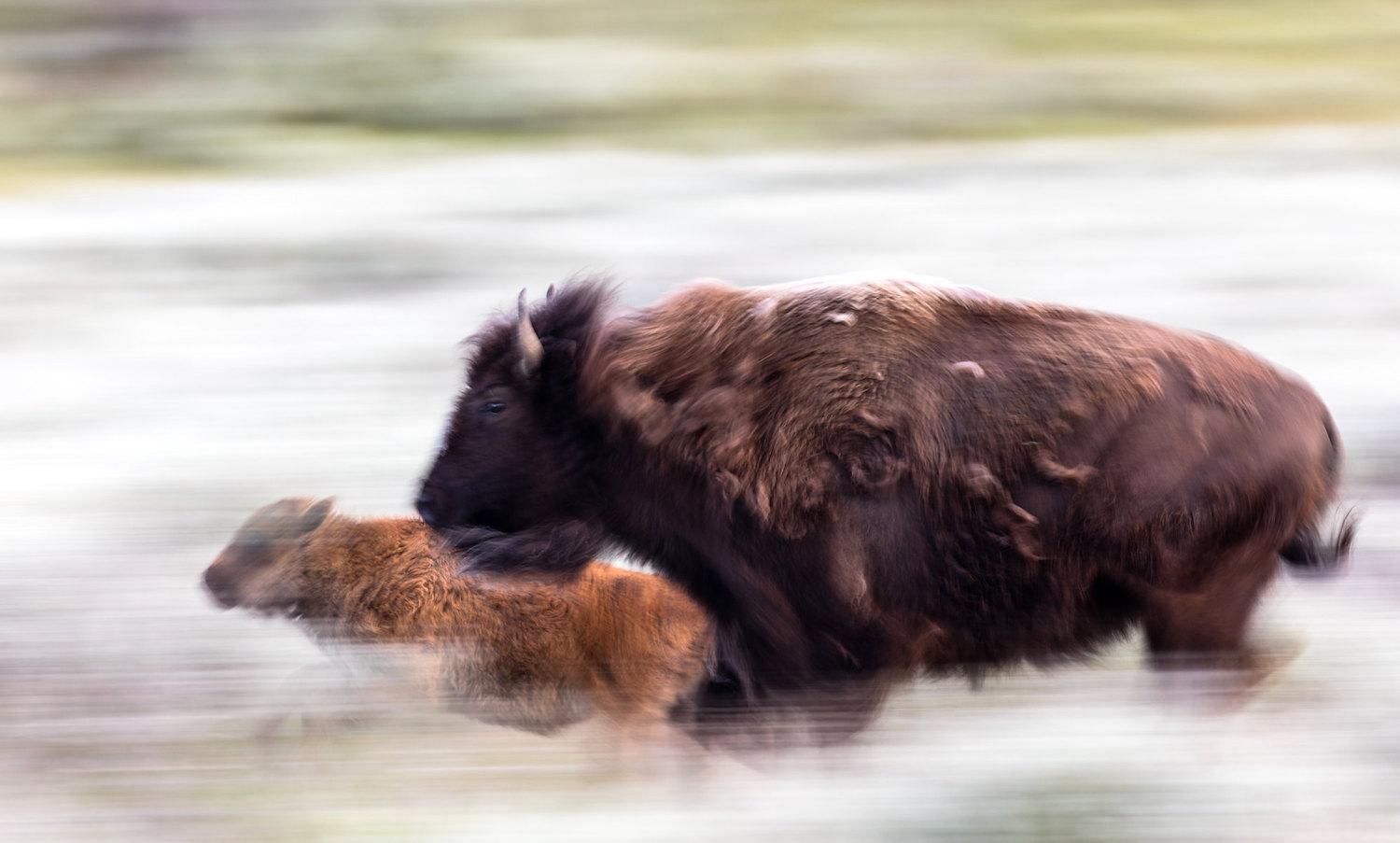
The Biden administration has released $5 million to help with bison restoration/NPS file
The Biden administration has released $5 million to help further efforts to restore grassland landscapes for bison.
"The funding will support tribally led initiatives to strengthen bison conservation and expansion, improved management of existing herds, and ecosystem restoration efforts in native grassland habitats," said a release Thursday from the Interior Department.
The funding includes $3.5 million from the Inflation Reduction Act that will support the InterTribal Buffalo Council’s herd development and apprenticeship program created by Secretarial Order 3410. The Council is a collection of 80 tribes in 20 states that facilitates the management of more than 20,000 bison. An additional $1.5 million from the Bipartisan Infrastructure Law is available through the Bureau of Indian Affairs to federally recognized tribes and tribal organizations to support tribal bison herd expansion interests, including a focus on ecosystem restoration through bison conservation.
"The American bison is inextricably intertwined with Indigenous culture, grassland ecology and American history. While the overall recovery of bison over the last 130 years is a conservation success story, significant work remains to not only ensure that bison will remain a viable species but also to restore grassland ecosystems, strengthen rural economies dependent on grassland health and provide for the return of bison to tribally owned and ancestral lands,” said Interior Secretary Deb Haaland. “This new funding from President Biden’s Investing in America agenda will help support tribal efforts to restore this iconic species and integrate Indigenous Knowledge into the department’s shared stewardship goals.”
Bison, North America’s largest mammal, were designated the national mammal of the United States in May 2016. With bulls standing 6 feet tall and weighing as much as a ton, they long have been viewed as icons on the landscape. They appeared on the back of the Indian Head nickel that was minted from 1913-1938, as a symbol of the Interior Department since 1917, and part of the National Park Service “arrowhead” emblem since 1951.
Once moving across the Great Plains in herds that stretched to the horizon, the “great slaughter” of the late 19th century decimated the species and left only pockets of the animals on the landscape. Yellowstone National Park today is home to the largest free-roaming herds of bison, and the shaggy animals are revered by tourists who come to the park. Though many of the animals head to the park’s high country for the summer months, in winter they descend to the river valleys, where they use their massive heads as snowplows to uncover the remains of summer’s grasses and forbs.
Under Haaland the Interior Department is continuing work on bison restoration that dates back at least to 2008 when then-Interior Secretary Dirk Kempthorne pushed the initiative.
The Interior Department’s 2008 Bison Conservation Initiative “set the goal of restoring herds to their ecological and cultural role on appropriate landscapes within the species’ historical range.”
In 2011, when then-Park Service Director Jon Jarvis issued his “Call To Action” document that was to serve as a blueprint for leading the agency into its second century, one plank called for returning “the American bison, one of the nation’s iconic species, to our country’s landscape. To achieve this we will restore and sustain three wild bison populations across the central and western United States in collaboration with tribes, private landowners, and other public land management agencies.”
Salazar nudged that initiative further in 2012 when he issued a directive calling for short- and long-term proposals to transfer bison from Yellowstone to other federal or tribal lands “with a goal of restoring bison to their historic, ecological, and cultural places on appropriate landscapes.”
In 2020, Haaland announced a decade-long initiative to better understand genetic pools held within the Interior Department's roughly 11,000 bison and to bolster conservation and ecological efforts with states and tribes.



Add comment